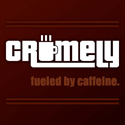Yes. Skip the psychologists. Talk to the marketers.
A recent article in the Seattle PI talks about psychological research to encourage kids to eat better. It's worth a read.
Hide the chocolate milk behind the plain milk. Get those apples and oranges out of stainless steel bins and into pretty baskets. Cash only for desserts.These subtle moves can entice kids to make healthier choices in school lunch lines, studies show. Food and restaurant marketers have long used similar tricks. Now the government wants in on the act.The U.S. Department of Agriculture announced what it called a major new initiative Tuesday, giving $2 million to food behavior scientists to find ways to use psychology to improve kids' use of the federal school lunch program and fight childhood obesity.A fresh approach is clearly needed, those behind the effort say....Some tricks already judged a success by Cornell researchers: Keep ice cream in freezers without glass display tops so the treats are out of sight. Move salad bars next to the checkout registers, where students linger to pay, giving them more time to ponder a salad. And start a quick line for make-your-own subs and wraps, as Corning East High School in upstate New York did...The agency requested proposals from researchers on how to get kids to actually eat the good stuff. Cornell scientists Brian Wansink and David Just will get $1 million to establish the child nutrition center. Fourteen research sites around the country will share the other $1 million....For example, some Corning schools had express lines for a la carte items - mostly chips, cookies and ice cream. The idea was to reduce bottlenecks caused by full tray lunches that took longer to ring up. But the result was a public health nightmare."We were making it very convenient for them to quickly go through the line and get a bunch of less nutritious items," Wallace said.After studies by Wansink, they renamed some foods in the elementary schools - "X-ray vision carrots" and "lean, mean green beans" - and watched consumption rise. Cafeteria workers also got more involved, asking, "Would you rather have green beans or carrots today?" instead of waiting for a kid to request them....More
I hate to disappoint the USDA, but this research has already been done. Maybe it's not published in psych journals, but it is done. Talking to the psychologists is the wrong answer. They need to talk to people in Marketing.
This is a merchandising and marketing issue. Grocery stores, retail stores, and markets around the country conduct this experiment everyday. The experts in displaying foods and promoting one item over the over work it all out in aisles and cubicles around the world. They know how to do it because their jobs depend on it everyday.
The USDA needs to step away from the psychologists and work with the product marketing and store merchandising specialists who already know how to move the product.

1 comment:
wonder what it would cost to send every cafeteria worker and manager through Sales 101. You don't need a marketing degree to know that hand-selling and suggestive selling work.
Post a Comment